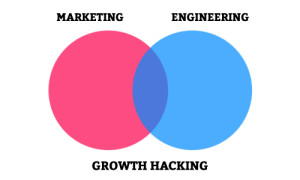Quora is one of my favorite websites. If you haven’t paid it a visit before, check it out. It’s a fantastic community of intelligent internet users sharing knowledge on a vast array of topics.

As a (relatively) new platform, most Quora users are early adopters, and often very forward thinking. Which means that a subject such as ‘Growth Hacking‘ – a term perhaps still unheard of by many – is a popular area of discussion. There are some truly valuable insights into how leading brands have attained huge growth in traditionally unconventional ways.
But firstly, what is growth hacking? Aaron Ginn provides an excellent answer to this question, which I have summarized here a little:
growth hacker (noun) – one who’s passion and focus is pushing a metric through use of a testable and scalable methodology.
A growth hacker finds a strategy within the parameters of a scalable and repeatable method for growth, driven by product and inspired by data. Growth hacking’s goal are based in marketing but driven by product instincts. A growth hacker lives at the intersection of data, product, and marketing.
While examples of great growth hacks aren’t hard to find on Quora, there are a few expert answers that really stand out as worth highlighting. I have showcased these below – take a look, and add your thoughts in the comments.
1) By B. J. Mendleson
Buzzfeed adjusts their headlines, text, and images in real time to see what will increase sharing. Sort of like an A/B test but there are multiple variables being changed simultaneously and in real time. The results speak for themselves.
2) By Pek Pongpaet
Hotmail – this is old school Web 1.0 growth hacking. Hotmail was a provider of free email. At the end of your email message, they automatically added the signature ‘Get your free email at Hotmail [link]’. Within hours of this their growth took the shape of the classic hockey stick growth, going from 3000 users a day to 1 million users in 6 months, to 2 million 5 weeks after and to 12 million users in 1.5 years.
3) By Scott Dunlap
XYZ just endorsed you for a skill/expertise (LinkedIn). LinkedIn is the master of using data product to create a FOMO (Fear of Missing Out) network. When they moved from “endorsements” (public endorsements of a colleague that goes right on their LinkedIn profile) to allowing others to endorse you for specific skills, it created two amazing growth hacks. First, they found a way for your network to deepen your profile for you, which goes right to their main source of income – recruiter search tools. This not only feeds their business, but means you have to keep coming back to check on how your profile is being built. Second, it creates this reciprocal desire to do the same for others, which increases the creation of this data exponentially. 238 million members and growing, revenue up 37% this year and no signs of slowing…this is growth hacking that creates both user growth and revenue.
4) By Adam Breckler
Pinterest auto-follow. Upon signing up for Pinterest you are automatically following a select group of high quality users. This in turn helps alleviate the cold-start problem, where you have to go looking around the site to find boards and people to follow. Instead they present a sampling of high quality content immediately filling your feed.
So in simple terms, what can we take from those excellent examples?
- Testing is vital
- Huge growth isn’t magic – something as simple as an email signature can be the key to unlocking momentum
- Build bridges to make user-to-user engagement easy
- Help all new users get the ball rolling so that they understand the ‘WOW’ factor immediately
Each of these examples ought to provide marketers and business owners ideas, and the place to start is by asking yourself: “How does this method or goal relate to my business?”
But over to you – are there any growth hacking examples you’ve heard of or implemented yourself that you’d like to share?




Awesome, post! Thanks for sharing. I specifically like the Pinterest one.
I feel that the best growth hacking is repurposing core content across multiple channels. For a bit of work, you can appear everywhere by repurposing your content right.